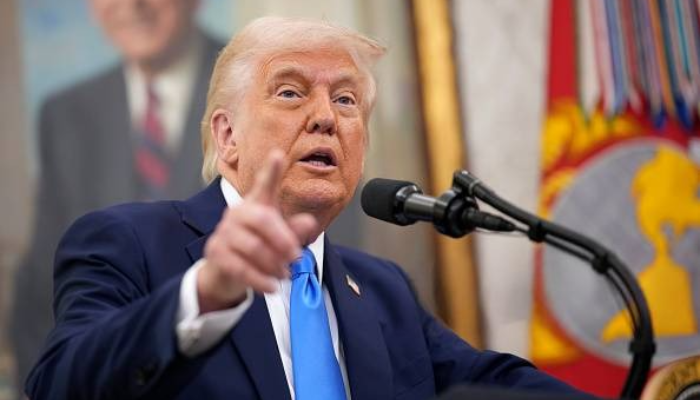
Despite rising concerns from investors and a noticeable dip in US stock markets, President Donald Trump has made it clear that there will be no relaxation or suspension of current global tariff policies. His firm stance has added fresh uncertainty to already volatile financial markets across the world.
Markets were hoping for some relief in the form of a temporary tariff halt to ease global trade tensions. However, the US administration appears to be continuing its hardline trade approach, signaling that negotiations with other countries will go on under existing tariff pressures.
US Markets React to Tariff Tensions
The US markets saw high volatility on Monday:
- The Dow Jones Industrial Average fell by 349 points.
- The S&P 500 closed slightly down by 0.2%.
- The Nasdaq Composite showed a marginal gain of 0.1%.
Earlier in the day, the Dow dropped by over 1,700 points before rebounding briefly, reflecting how sensitive markets remain to trade policy signals. The initial rally was driven by false speculation about a possible 90-day pause in tariffs, which was later dismissed by the White House.
European Stock Markets Take a Hit
The impact of Trump’s tariff policy wasn’t limited to the US:
- Spain’s Ibex 35 index plunged by over 5%.
- Germany’s DAX opened over 2,000 points lower than the previous session but managed to recover slightly by afternoon, ending 4.5% down.
- In Poland, the WIG20 index dropped by 6% before recovering to a 1% loss by midday.
Across Europe, fears of a global slowdown were reflected in heavy sell-offs, particularly in sectors exposed to international trade.
Global Economic Outlook Clouded by Tariff Strategy
Investors are growing increasingly cautious as the potential for further tariff increases remains on the table. The uncertainty is forcing global markets to brace for continued economic headwinds, especially if additional tariffs target large trading partners like China or the European Union.
The rapid shift in market sentiment shows how global financial stability is closely tied to the evolving US trade strategy. Without clear signs of easing, analysts warn of prolonged volatility and reduced investor confidence.
With no signs of a tariff pause, President Trump’s trade strategy is expected to remain a key driver of market fluctuations in the coming weeks. As negotiations continue and global economies adjust, financial markets will remain on high alert for any policy changes from Washington.
